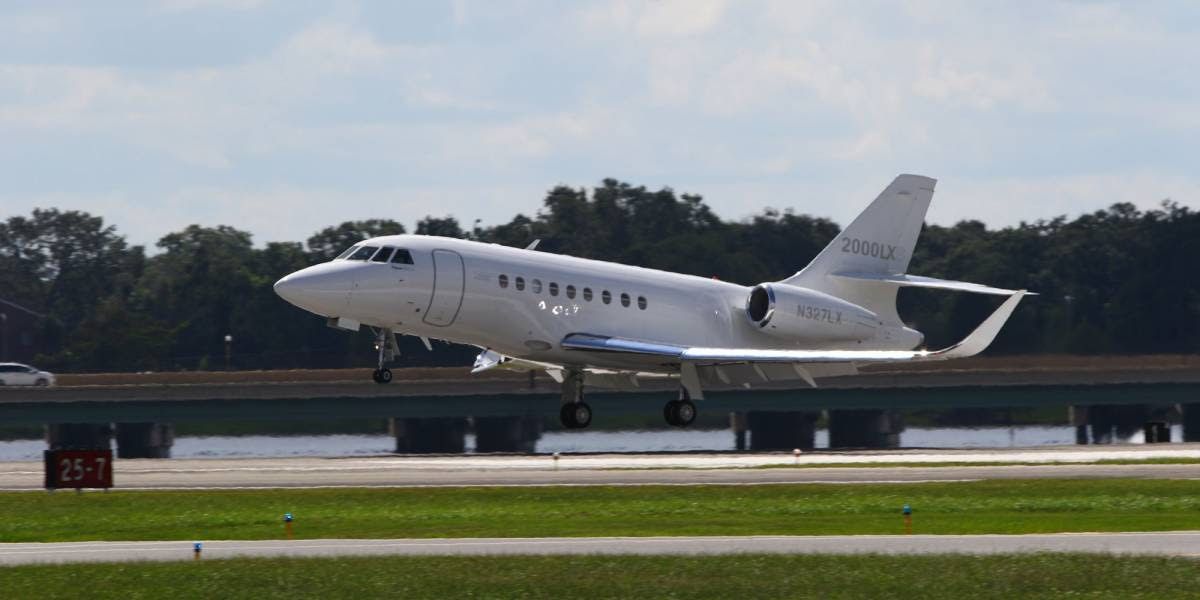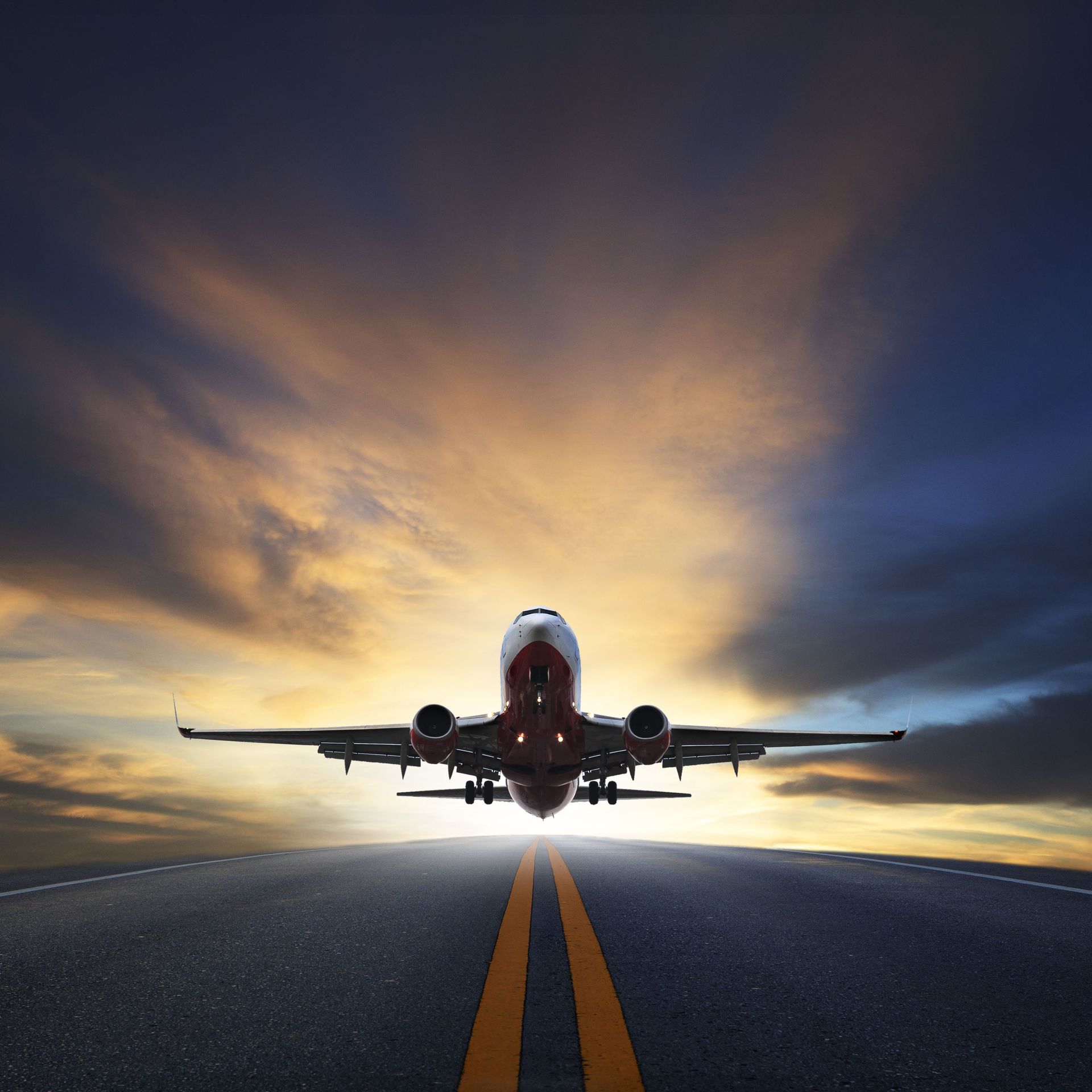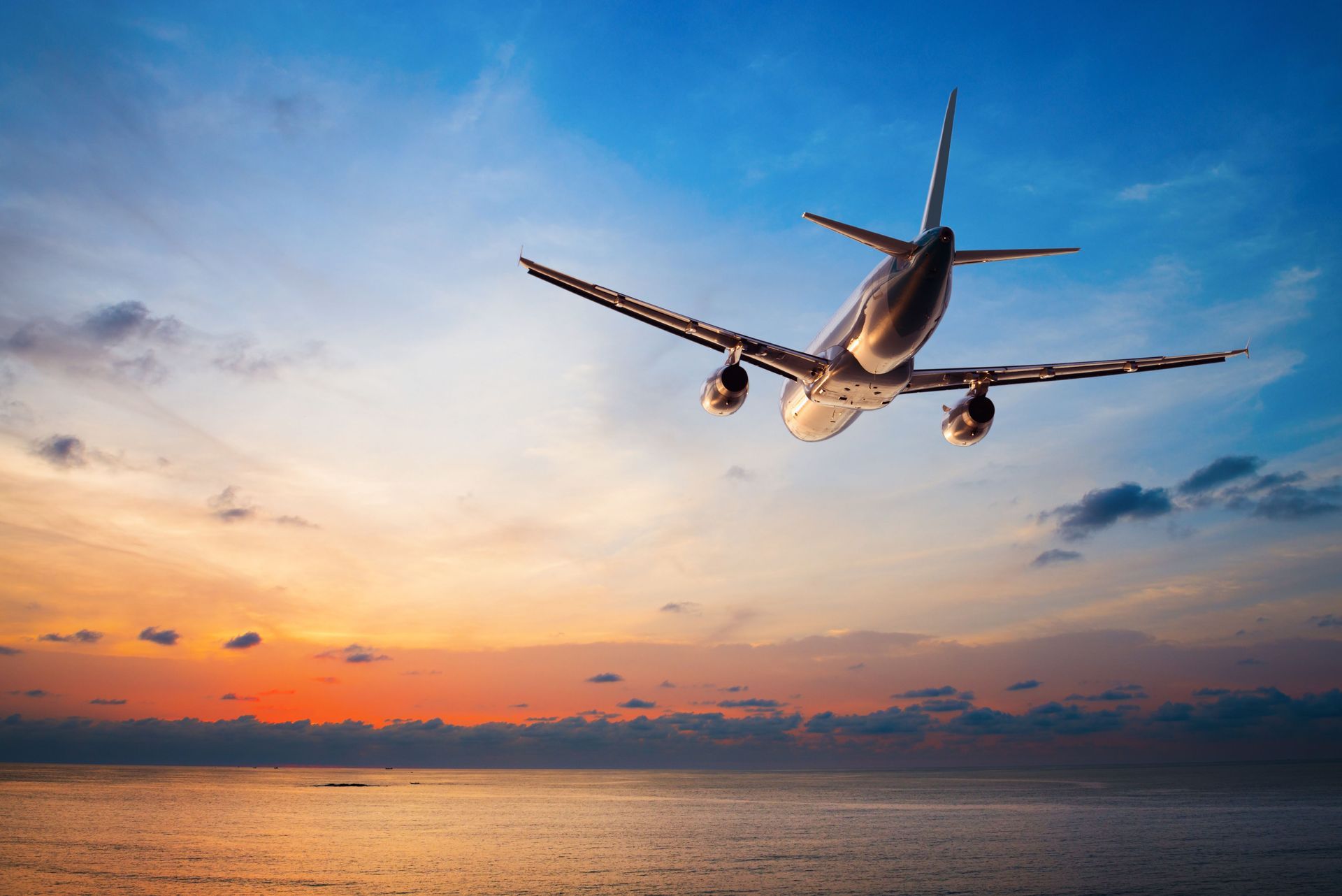July 26, 2021
Written by Doug Gollan
Posted on March 5, 2019 17 Comments
NetJets may be ubiquitous with the concept of fractional ownership, and by far the dominant player in the market, but the big question remains, is the unit of Berkshire Hathaway worth a premium?
(Updated June 21, 2021) – There’s no question NetJets is the biggest player in the private aviation sector. And for the over 3,000 subscribers to Private Jet Card Comparisons since we launched just over three years ago (Thank you!), I get to talk with perhaps 20%. It is likely more day-in-day-out contact with private aviation consumers than any other journalist. And if there is one company that comes up more than others, it’s NetJets.
Subscribers range from Fortune 100 companies to owners of all sorts of successful businesses. There are retirees who no longer have access to the company jet. Professionals from medicine, law, and finance use jet cards for personal and business travel. Wealthy individuals buy jet cards for family members, such as enabling a daughter to regularly bring over their grandchildren. It’s always fun to have the opportunity to hear how private aviation can enhance whatever they are doing while doing good. Business aviation is responsible for over a million jobs just here in the U.S. alone.
Only 29% of subscribers say jet cards are their only private aviation solution. Nearly all (99%) were current users of private aviation until COVID-19. Now, about a third are new to the sector. Of those previously using private flights, 12% own full aircraft, and five percent have fractional shares. In other words, their feedback is very useful to me and provides great insights I can share with other subscribers. It’s also helpful when I try to do a deep dive into a company, as I will attempt here.
A typical Monday morning view of NetJets U.S. flying activity which will see over 400 flights.
Who Buys Jet Cards?
Prior to COVID, most jet card buyers were already users of on-demand charter (44%), according to a survey of Private Jet Card Comparisons subscribers. A couple of bad experiences sends them looking for the reliability of a jet card program, particularly for service recovery and aircraft standards. Some owners need supplemental lift. Others are selling their aircraft, tired of ownership headaches, and worried about the increasing shortage of pilots. Others want to see if the grass is greener. They might be unhappy with how their current jet card provider handled various service issues.
Not Ready For 5 More Years
Then I get fractional owners with NetJets. Usually, their share is winding down and they’ve decided to see what else is out there. In some instances, their flying patterns are changing. They are not ready to make another five-year commitment or even three years.
The idea of having similar service points as fractional ownership (guaranteed availability, one-way pricing, fixed hourly rates), but without the long-term commitment has sent them to look into jet cards, which to the surprise of many makes up close to 20% of NetJets’ flying.
At any rate, for the most part, they don’t have any complaints, just the question, is the price worth it? Yes, NetJets pricing! Can I get something similar and save money?
Why Buy NetJets?
When I talk to folks from finance or procurement departments of big companies, particularly those that are publicly traded, or advisors to UHNWs, NetJets is usually among their top choices. The old adage is you don’t get fired for buying IBM. In other words, if you recommended NetJets as the best solution to the chairman, even if there are issues, your recommendation would be defensible.
NetJets operations center in Columbus, Ohio provides a good view of the company’s scale and focus on safety and service.
As a unit of Warren Buffett’s Berkshire Hathaway, NetJets has the iconic investor’s seal of approval. He’s even appeared in ads for NetJets – with Bill Gates about 15 years ago. During the annual shareholder’s meeting in Omaha, which is literally a trade show of Berkshire companies, NetJets aircraft are often used as a backdrop for various cable television shows covering the event.
Financial Staying Power
The second point of reassurance for risk-averse buyers is the company’s staying power. In 2009, hit hard by the Great Recession, the Columbus, Ohio-based operator racked up a $711 million loss. It’s something that would have probably been a death blow to many companies. With Berkshire’s backing life went on.
The first Cessna Citation Longitude will join the NetJets fleet later this year. Above is a manufacturer owned demo aircraft painted in the fractional operators color scheme.
In private aviation, new state-of-the-art aircraft alone don’t guarantee staying power. Look up Zetta Jet. It left a 70-page long list of creditors, including those who had prepaid six figures for charter flights. Same with Avantair. After the fractional share provider closed down it was found to have falsified maintenance records during its money squeeze. Just this year, JetSuite customers lost $50 million in unused flight credits. In other words, if you pay and don’t get to fly, you paid a high price.l
Experienced Pilots
NetJets executives say the current pilot shortage will last through 2034 – that’s right 15 more years. During the Corporate Jet Investor conference in Miami in 2018, an executive with Jet Edge, a management company that specializes in large-cabin jets, said the market rate for Global Express pilots had recently jumped to $300,000. Instead of interviewing pilots, pilots were interviewing management companies. “Does the owner have young kids?” “So do I. Forget it. I don’t want to be flying every school holiday.”
Flight crews at NetJets average 16 years with the company and over 10,000 hours. Its attrition rate is under 5%, including retirements and extended leaves. In 2018 it hired 185 new pilots who had an average of 6,500 flight hours. “We’re not a stepping stone. We’re a destination,” says Alan Bobo, an operations executive. Some do go to the major airlines, and less than 1/10 th of 1% go to other business aviation companies. The message is NetJets gets the creme of the crop.
After several years of acrimony between the pilots and management post-Recession, new management has brought a new day. Increased flexibility, including now 200 bases in the U.S. alone, plus opportunities to earn more by flying more have returned the esprit de corps, a critical part of the formula since in private aviation the pilots are the main conduit to the customer. Perusing several pilot websites, there doesn’t appear to be any remaining ill will and the consensus seems to be pilots are in a good mood about management and working conditions.
In addition to their twice per year five-day visits to Columbus, which include four days of recurrent simulator training at Flight Safety, they also get service training. The head of the owner experience hails from Ritz-Carlton.
Sometimes it means saying no when the flight crew believes a decision could impact safe operations. “Our owners pay us a lot of money to tell them no,” says Don Wittke, the chief pilot.
Flight Operations Quality Assurance (FOQUA)
It’s the scale that helps power what executives say is an industry-leading approach to safety. NetJets is IS-BAO Stage 3 (as are others such as Delta Private Jets, Jet Aviation, Jet Linx Aviation) and Argus Platinum. It dropped Wyvern Wingman. Its viewpoint is that none of the third-party raters can provide the rigor of its internal safety focus. There over 150 hours of pre-scheduled C-Suite meetings annually that focus on safety.
One example is FOQA, which stands for Flight Operations Quality Assurance. It takes flight data recorder data from every flight, then using big data to slice and dice it. Among the thousands of data points, it tracks approaches to every airport, including where on the runway the airplane touched down and where it stopped.
Based on that data, NetJets has created its own approaches for several airports, including Truckee, California, and is doing so for a handful more, including Heber City, Utah, and Sedona, Arizona. It has also restricted operations of certain aircraft types to specific runways at some airports.
While passengers would never notice variances in landing and stopping points that led to the changes, that’s the point. Identify minor operational variations that combined with other factors might at some point lead to something more serious. Eliminating them is the goal.
FOQA data is also used in simulator training, and data is used among pilot groups in ongoing competition based on optimizing safe flying practices. Instead of one pilot not wanting to critique another, the idea is teamwork and the knowledge that every move on the flight deck is recorded, so there is no way to hide mistakes or oversights.
Over 2,500 NetJets Pilots
With over 2,500 pilots, NetJets allows pilots to take themselves off a flight for any reason without retribution. That includes being tired. Flight planning considers potential fatigue for pilots, analyzing where they have been flying, including crossing time zones. By plotting it out days in advance, operations can plan longer rest times for certain crews while scheduling well-rested crews to pick up a specific flight.
Pat Gallagher, the president of sales and marketing, says few charter operators have that as an option. The operator may only have several of that aircraft type, and the plane is in a far-flung destination. The only option is to delay the flight or fly with a legal, but possibly tired cockpit.
In fact, it’s the relative lack of fatal accidents in private aviation that executives at NetJets believe provide a false sense of safety for both consumers and operators. An example that is often cited in the industry is the Bedford, Massachusetts crash that killed Philadelphia Inquirer co-owner Lewis Katz in May 2014. It was found the pilots did not run a single checklist between engine start and take off. In 98% of their previous 175 takeoffs, they neglected to do a flight control check.
NetJets pilots work seven days on, seven days off shifts. Pairings change constantly, something that the company believes discourages complacency from being too familiar with your flight deck partner.
Get Me The Best Price For Duck a l’Orange
When looking for a good French restaurant, you probably don’t have your assistant call three or four places to compare their price for Duck a l’Orange. And you probably don’t go back and ask if they can knock a few dollars off or add a free appetizer. However, that is the way some people shop for private aviation solutions. It’s also the typical way companies sell against NetJets. We have cheaper duck, and duck with orange sauce is a duck with orange sauce.
Calculating the Value of NetJets
Calculating value isn’t straightforward, but NetJets doesn’t make it easy either. To start, NetJets is the least transparent when it comes to the pricing of any provider we cover.
That is, they don’t publish pricing on their website, and in fact, you can’t just call up and get pricing. From what I’ve been told by subscribers, you basically get interviewed before you can get it.
The pricing I’ve seen (and is included in our spreadsheets) is second-hand. (NetJets is the only company that doesn’t provide us pricing information directly. They do provide quite a bit of data that isn’t available to the general public). What’s more, pricing in a brochure versus what you actually pay is impacted by many variables. So just looking at what providers publish on their websites isn’t always that helpful.
The hesitancy for NetJets in publishing a public rate card, for jet cards, or shares and leases, is that competitors will use it in presentations to show their price advantage. Lots of jet card and charter companies do their own buyer’s guides. They compare what they offer to others. I’m not sure if I’ve ever seen one that doesn’t tout the sponsor’s offerings as X% less than NetJets. I understand that by not putting robust pricing and pricing policy information out into the public domain, it is more difficult for competitors to say they are comparing their pricing to actual NetJets pricing.
Corporate Angel Card
With some of NetJets’ card products, from the pricing I’ve seen, dollar for dollar, NetJets actually may offer a lower price than other companies. For example, its Red Cross-Country Corporate Angel Card gives the user flights a mission-appropriate super-midsize Citation X or Challenger 350 jet for segments over 3.5 hours. Shorter flights are in a Citation Excel/XLS, a midsize jet. The flights are all the same hourly rate regardless of aircraft or duration. Hawaii is in the primary service area, meaning no ferry fees, plus it comes with guaranteed availability. You can use all 25 hours for the super-midsize aircraft, too, making it a go-to solution if you are traveling to the islands.
Lead Time From 10 to 24 Hours
(Note: As of June 14, 2021, NetJets suspended sales of its Classic Jet Card and the Latitude in its jet card program. The company says it is getting ahead of record demand. It also changed the 45 peak days for its Elite Card to blackout dates.)
Depending on the Marquis Jet Card type, the lead-time for reservations is 10 hours (Classic) to 24 hours (Elite). Both are in the upper league when it comes to flexibility, which is important if you are traveling on business. At 120 hours for peak days, again, flexibility in terms of late booking is a strength. Fractional owners have as little as four hours, and no matter when the call comes in, the goal is to fulfill the flight.
One example was a customer whose daughter was flying back home from South Dakota. Her commercial flight was canceled, so dad called NetJets. It had a repositioning flight in the area. From there, it was able to land and have the young lady on her way home in about an hour.
With over 450 aircraft in the U.S., and along with Executive Jet Management and NetJets Europe, over 750 business jets worldwide, the scale is a strength and part of the company’s value.
Poor recovery from mechanicals or other disruptions is the number one reason subscribers give me for wanting to change jet card providers. It’s not something I’ve heard from NetJets users.
2021 NetJets’ Jet Card Policies and Pricing
| Policies | Classic Jet Card | Elite Jet Card | Corporate Angel Card |
| Non-Peak Booking | 10 hours | 24 hours | 10 hours |
| Deicing Included | Yes | Yes | Yes |
| WiFi Included | Yes | Yes | Yes |
| Full Catering Included | Yes | Yes | Yes |
| Peak Days | 30 days | 45 days | 30 days |
| Peak Day Surcharge | 0% | 25% | Varies |
| Denominations | 25 or 50 hours | 25 or 50 hours | 25 hours |
| Starting Price | $220,900 | $187,900 | $257,900 |
Peak Day Surcharges
For Marquis Jet Classic branded cards, NetJets doesn’t have a peak day surcharge. While it’s not alone, surcharges can be up to 40%, although more typically 5% to 20%. Still, if you are doing lots of peak day flying – something I recommend trying to avoid for several reasons – that higher NetJets hourly rate may actually be closer to your other quotes when you factor in extra charges from other providers. NetJets Elite branded jet cards do carry a 25% peak day surcharge.
Daily Minimums and Taxi Time
Another area where NetJets pricing might turn out to be more favorable than other options is for flights under two hours. NetJets’ daily minimums are 60 minutes, including taxi time, except for the Phenom 300, Excel/XLS, and Latitude. For those three there is no minimum. Quite a few providers have two-hour minimums on larger aircraft. While website rates often look great, they don’t necessarily match your invoice. That midsize jet with a two-hour daily minimum at $6,750 per hour is going to cost you $13,500 at least for that 45-minute flight ($6,750 x 2 hours). NetJets will be about 40% less with its XLS.
Deicing Included
Duck analogies aside, in addition to safety, one factor you need to take into consideration that can impact your actual cash out of pocket cost for flying is deicing.
If you are flying in winter weather, deicing can add up quickly – only about a quarter of card programs we analyze, including NetJets, include deicing. When you charter a jet, you pay for deicing, and if it had to be ferried in from another airport experiencing winter weather, you might find you get charged twice for your single flight. For a large jet, you might find yourself paying an extra $5,000 to $10,000 for deicing before you even start your trip!
Primary Service Area
There are other places that NetJets saves you cash. Primary Service Areas for its jet cards vary, but for the most part, they include the entire Caribbean, Central America, and Mexico. Competitors have surcharges ranging up to 50% for these same places. Others only offer custom quotes, so you don’t get fixed rates. That means repositioning costs are factored into your quotes. NetJets’ Gulfstream G450 jet card provides ferry-free flights to and from Europe. There are also as available fixed one-way rates available to all members under $100,000 each way. So again, depending on where you are flying, just assuming NetJets will be more expensive is wrong.
NetJets Fleet
In terms of its fleet, NetJets is constantly taking on new aircraft and exiting older ones. During NBAA in October 2018, the CEO Adam Johnson said it had added 230 new jets over the previous four years. At a conference in 2020, its president, Pat Gallagher, said the company expects to take delivery of at least 40 new private jets annually for the next decade.
Not all are offered for jet cards, although more options have been added in the past year. Right now, the U.S. offer includes everything except the Longitude and Global Express 5000 and 6000. Currently, options include the Citation XLS, Lattitude, Sovereign, Challenger 350, Challenger 650, and Gulfstream 450.
2021 Jet Card Aircraft Options from NetJets
- Embraer Phenom 300 (Light Jet)
- Cessna Citation XLS (Midsize Jet)
- Cessna Citation Sovereign (Super Midsize)
- Cessna Citation Latitude (Super Midsize)
- Bombardier Challenger 350 (Super Midsize)
- Bombardier Challenger 650 (Large Cabin)
- Gulfstream G450 (Large Cabin)
NetJets Pricing 2021
In August 2019, NetJets added the Phenom 300 as an Elite Jet Card program. It was priced at $189,000 for 25 hours, including fuel and FET, and serves as its entry point. The Phenom 300 was reduced to $168,900 in Spring 2020, and a Classic option was added.
For 2021, NetJets repriced its jet cards. The Phenom 300 Elite Card is now $7,516 per hour ($187,900 for 25 hours). The Classic version for the Embraer light jet is $8,836 per hour ($220,900 for 25 hours). Both include Federal Excise Tax and there are no fuel surcharges.
At the other end of the spectrum, a NetJets Gulfstream G450 runs $16,760 per hour one-way on an Elite Card and $18,676 per hour with the Classic type. Like all its cards, you don’t pay repositioning charges within the primary service areas, making it a good option for Europe and South America.
Operational Upgrades
About 30% of NetJets customers get upgraded for operational reasons. What’s more, the upgrades are doled out based on fleet utilization. Jet card customers are granted operational upgrades on the same basis as owners. Subscribers who have shared their NetJets flying with me showed upgrade rates well over 50%.
Private Jet Catering
NetJets has been investing in wide-ranging catering upgrades based on how taste changes at 45,000 feet altitude. At the same time, customer preferences are noted. However, making them happen sometimes is easier said than done. In one case, operations learned that there was no Amstel Light aboard an aircraft scheduled to take a customer who has it on his list of requirements. What’s worse, the brand wasn’t sold anywhere near that airport he was leaving. Luckily, there were several other NetJets aircraft parked there. They pooled their Amstel stock and split up the supply so the customer could pop his favorite cold one.
There are no extra charges with catering which is based on the number of people flying and flight time. There is an extensive menu, including local specialties. Owners can order via phone or online. Wines rotate on a quarterly basis, however, NetJets will allow you to order like substitutes without additional charges. Having catering included probably won’t be the reason you choose NetJets, however, it does provide some savings over many programs.
Columbus Operations
Probably the best way to understand the investment of NetJets into its operations is to visit its headquarters in Columbus, Ohio. In a large room similar to what you would find at a major global airline is the core of operations. It includes owner services, schedulers, dispatchers, and its own team of five meteorologists. They often talk directly with customers to discuss weather issues not directly related to flying. For example, “Is it going to rain there this weekend?” If so, why bother going if you can’t play golf?
It also helps the company plan for disruptions so several days ahead of time they can contact customers and recommend moving departures earlier, later, or alternate airports. Nervous fliers are often happy to move flight times if it will mean avoiding bad weather flying.
The company believes the scale and depth of its fleet and operations really come to light when there are disruptions. There’s faster recovery. It can assist more customers faster when there are natural disasters, such as potential hurricanes that necessitate customers evacuating themselves, family or employees.
In terms of its vendors, NetJets is constantly auditing and evaluating. That goes down to how FBOs store catering. Vendors that don’t pass muster are eliminated. Major maintenance is handled through approved and certified third parties are audited.
State of the Fleet
While NetJets doesn’t provide a specific number for fleet age, for all the new aircraft, some popular types can stay in the fleet for up to 15 years, still relatively young when it comes to the length of service for business jets. About 20% of the active (non-NetJets) U.S. charter fleet is over 30 years old, according to figures provided by NetJets so the point is, for the most part, you are flying on newer aircraft than the competition.
The company also checks all aircraft when they flow through Teterboro and updates cabins as needed. That can range from a full refresh to replacing specific items such as tables or paneling. I’ve heard from subscribers who say they have run across cabins in the Excel/XLS fleet they think could use a bit more TLC. I also was speaking to another subscriber who is now looking to return. He said the quality of aircraft he was getting via on-demand charter too hit-and-miss for his tastes.
Consistency is a benefit of NetJets. It configures its aircraft types (with the exception of the Challenger 650, which has a divan option) with like seating arrangements. Unlike many jet card programs, you get a similar product from flight to flight.
Another reason jet card buyers will look to NetJets is being able to buy specific aircraft types instead of just categories. For example, there aren’t a ton of Latitude, Sovereign, Challenger 650, or G450 options out there.
NetJets goes Supersonic with the Aerion AS2
On March 3, 2021, NetJets announced it had obtained 20 AS2 supersonic business jets’ purchase rights. Aerion’s global order backlog grows to over $10 billion with the order ahead of a planned 2023 production start. The speedy private jet will reach speeds of over 1,000 miles per hour, carrying 8 to 12 passengers.
NetJets Cost
If you fly to Hawaii, the Red Cross-Country Card, or for Europe, the G450 card could be lower cost than other options in the market. Both bring guaranteed availability and fixed one-way hourly rates. In other words, you don’t pay for the repositioning flights. NetJets also has as available zone-based fixed rates to Europe, another value offering starting at under $100,000.
The Cross-Country Red Card can be used exclusively for flights of over 3.5 hours at a value-oriented hourly price. If you are doing winter weather flying, the fact that NetJets includes deicing could be a significant saver. Same thing when it comes to shorter flights. Daily minimums are 60 minutes for super mids and large-cabin jets and are taxi time inclusive. Light jets and midsize jets have no minimums. NetJets is among the lowest-priced options for flights under 35 minutes, according to our exclusive Quick Compare Flight Pricing.
If you are flying to Canada, the Caribbean, Mexico, or Central America (for the Excel and larger), there are no surcharges, just international fees. Other jet cards have surcharges up to 50. Some don’t even have one-way rates (no ferry fees) outside the Continental U.S. In other words, flying to these places might actually be cheaper with NetJets.
Who Should Talk To NetJets?
If you believe that all Part 135 operators are safe, and you simply want the lowest price and don’t want to be convinced otherwise, chances are you shouldn’t bother. S ubscribers who have bought from NetJets say safety record, reliability, and convenience were the key selling points. Looking for turboprop or piston options? NetJets is all jets.
If you are new to private aviation, or you hold safety as a driving factor in your decision-making, then I would highly encourage you to put NetJets on your list. If possible, I would also encourage a visit to its Columbus operations center. With cards that provide 10 hour lead time for reservations and a large fleet, NetJets is a good choice if you absolutely, have to be there, and need to minimize disruptions as much as possible.
The post Is NetJets worth the price? first appeared on Western Aviation.







